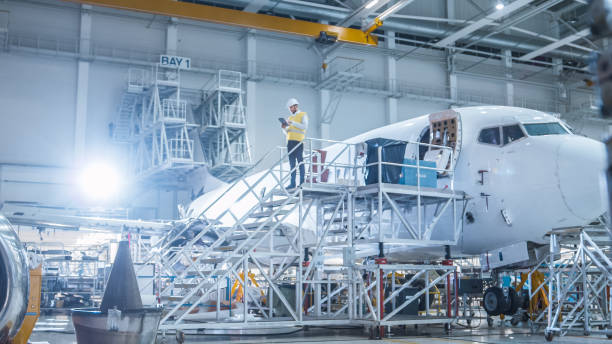Installing and using an aviation battery charger is an important part of keeping your aircraft in top condition. Whether you’re a pilot, mechanic, or DIY enthusiast, it’s important to know how to properly install and use a battery charger to ensure the safety of your aircraft and its occupants. Before beginning, it’s important to make sure you have the right charger for your aircraft’s battery. Different aircraft require different types of chargers, so it’s important to double-check that you’ve chosen the right one for your aircraft. Once you’ve selected the right charger, it’s time to install it. Begin by disconnecting the battery from the aircraft. Then, connect the charger’s input power cable to the aircraft’s electrical system, being sure to turn off the power before doing so.
Next, connect the charger’s output cables to the battery terminals. Finally, mount the charger in an appropriate location and secure it with the mounting bolts. Begin by setting the charger’s output voltage to match the battery’s voltage. Then, turn on the charger and monitor the battery’s charge level. Then, reconnect the battery to the aircraft and turn on the power.
Tips For Improving The Efficiency Of Your Aviation Battery Charger
When it comes to managing your aviation battery chargers, efficiency is key. A well-maintained battery charger can extend the life of your batteries and help ensure that your aircraft is safe and ready for flight. Here are some tips for improving the efficiency of your aviation battery charger:
1. Follow the manufacturer’s instructions: Always refer to the manufacturer’s instructions when operating your battery charger. This includes making sure that you use the right type of charger for your battery, setting the correct charging voltage, and following the recommended charging cycles.
2. Clean the terminals: Clean the terminals of your battery charger regularly to ensure optimal performance. Dirt and dust can accumulate on the terminals and prevent the charger from operating properly.
3. Check the connections: Make sure that the connections between the charger and the battery are secure and free of corrosion. Corroded connections can prevent the charger from charging the battery properly.
4. Use the right cables: Always use the correct cables when connecting the charger to the battery. Using the wrong type of cable can cause the battery to overheat and damage the charger.
5. Monitor the charging process: Monitor the charging process to make sure that the battery is charging properly. If the battery is not charging correctly, it may be time to replace the charger.
How To Select The Right Aviation Battery Charger For Your Aircraft?
When it comes to ensuring the safety and reliability of your aircraft, the right aviation battery charger is essential. Aviation batteries are an essential part of any aircraft, providing power for critical systems such as lights, instruments, and avionics. When choosing an aircraft battery charger, it’s important to consider several factors, such as the size and type of battery, the environment in which it will be used, and the charging cycle requirements. Here are a few tips to help you select the right charger for your aircraft.
1. Determine the size and type of battery: Different types of batteries require different chargers. It’s important to know the size and type of your aircraft battery in order to select the correct charger. Some chargers are designed for specific battery types, such as lithium-ion, lead-acid, or nickel-cadmium.
2. Consider the environment: It’s important to consider the environment in which the charger will be used. Some chargers are designed to be used in extreme temperatures or in areas where there is high humidity or dust. Other chargers are designed to be used in aircraft hangers or garages.
3. Consider the charging cycle requirements: Different types of batteries require different charging cycles. Lead-acid batteries, for example, require a slow charging cycle, whereas nickel-cadmium batteries require a fast charging cycle. It’s important to know the type of battery and the recommended charging cycle in order to select the right charger.
4. Choose a quality charger: It’s also important to select a quality charger. Look for one that is designed for aviation and is certified by the FAA. This will ensure that the charger is reliable and safe to use.
What do You need To Know About Aviation Battery Chargers?
Here’s what you need to know about aviation battery chargers: Types of Aviation Battery Chargers There are three main types of aviation battery chargers available: linear, switch-mode, and multi-stage chargers. Switch-mode chargers are more efficient, as they automatically adjust the current and voltage to the battery depending on its state of charge. Multi-stage chargers are the most complex type, and are capable of delivering different levels of current and voltage based on the battery’s requirements.
In addition, battery chargers must be reliable and durable, as they can operate in extreme temperatures and vibrations. Charging Times The charging time of a battery depends on the type of charger used, and the capacity of the battery. Generally, linear chargers take the longest to charge a battery, while switch-mode chargers are the quickest. However, multi-stage chargers are the most efficient, as they can adjust the charging time based on the battery’s current state. Battery Maintenance Regular maintenance of aircraft batteries is essential to ensure their reliability and performance.
You Can Also Read About Online Handyman Home Services

